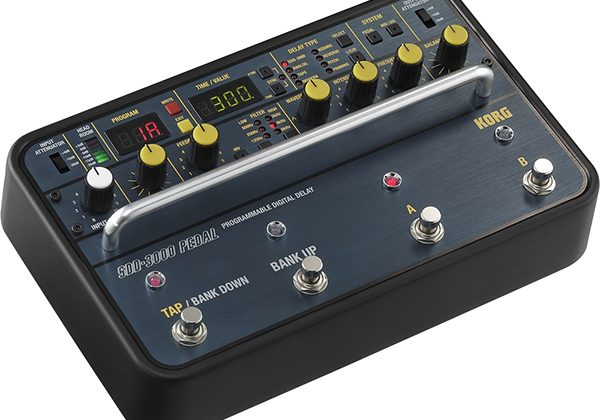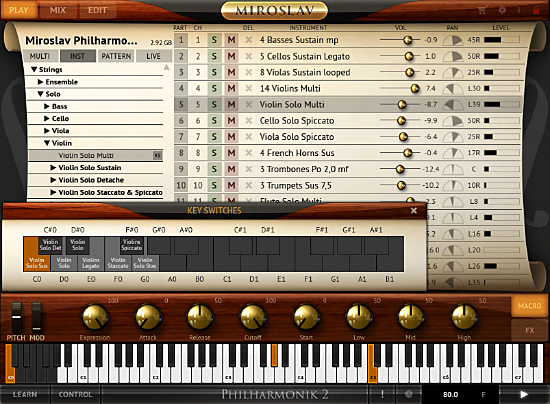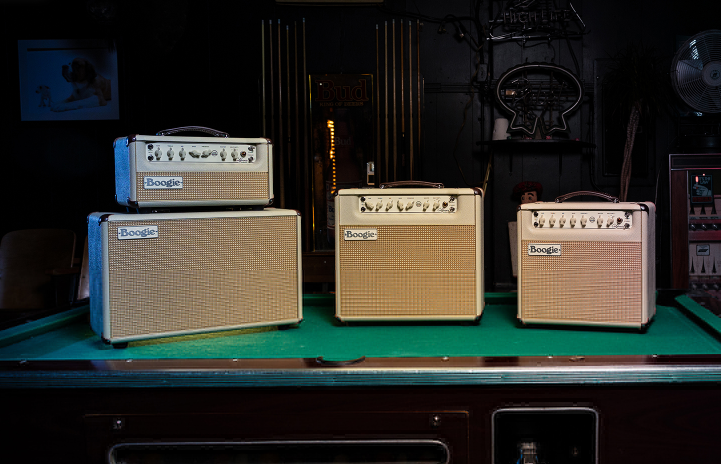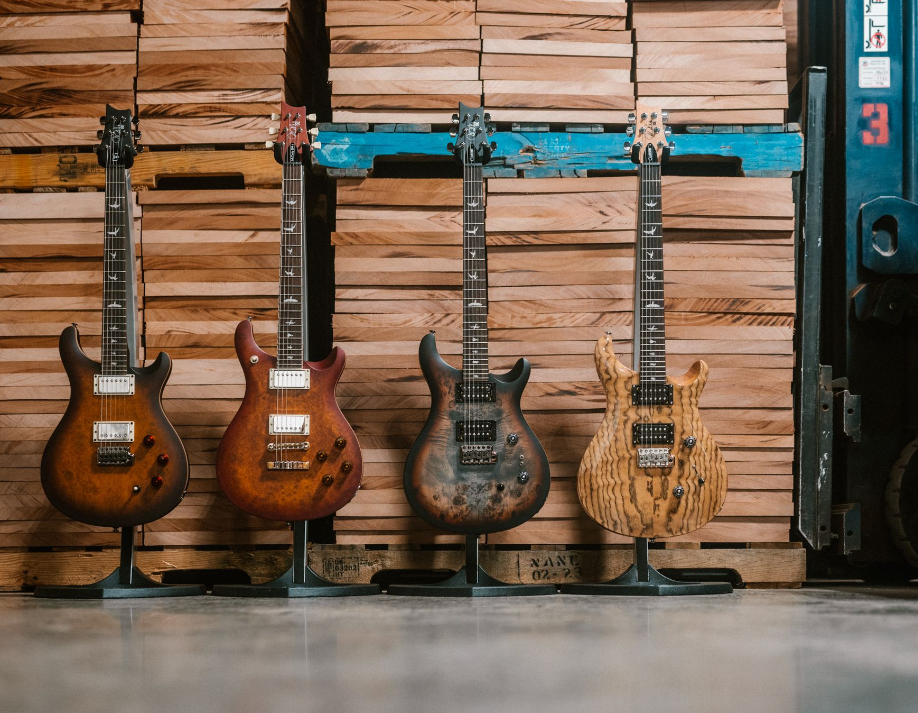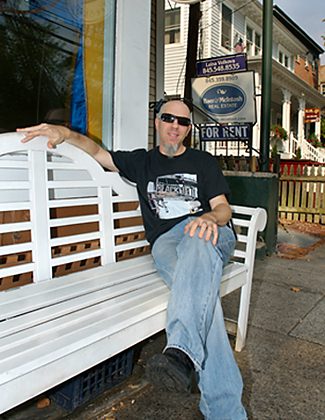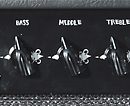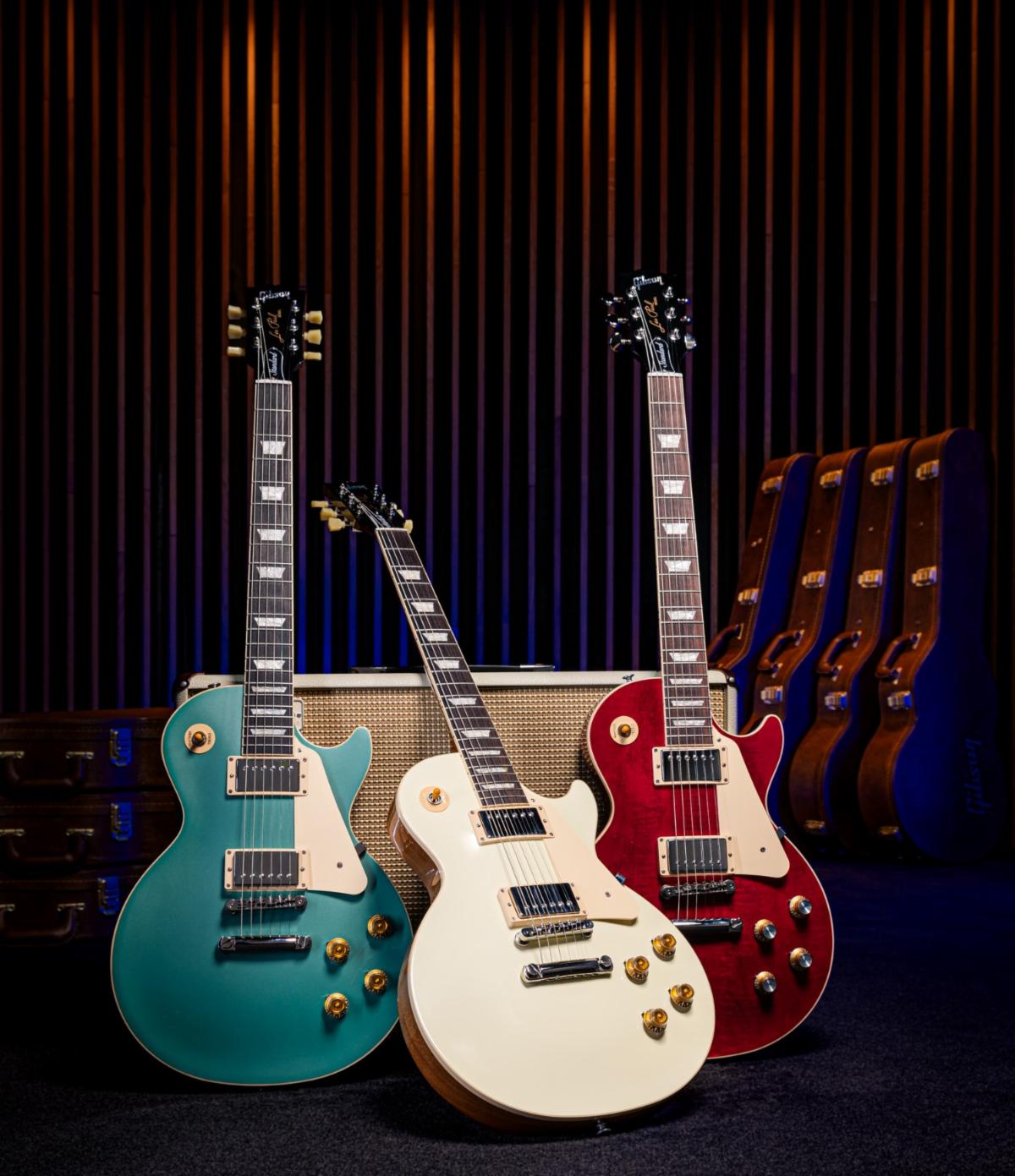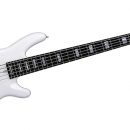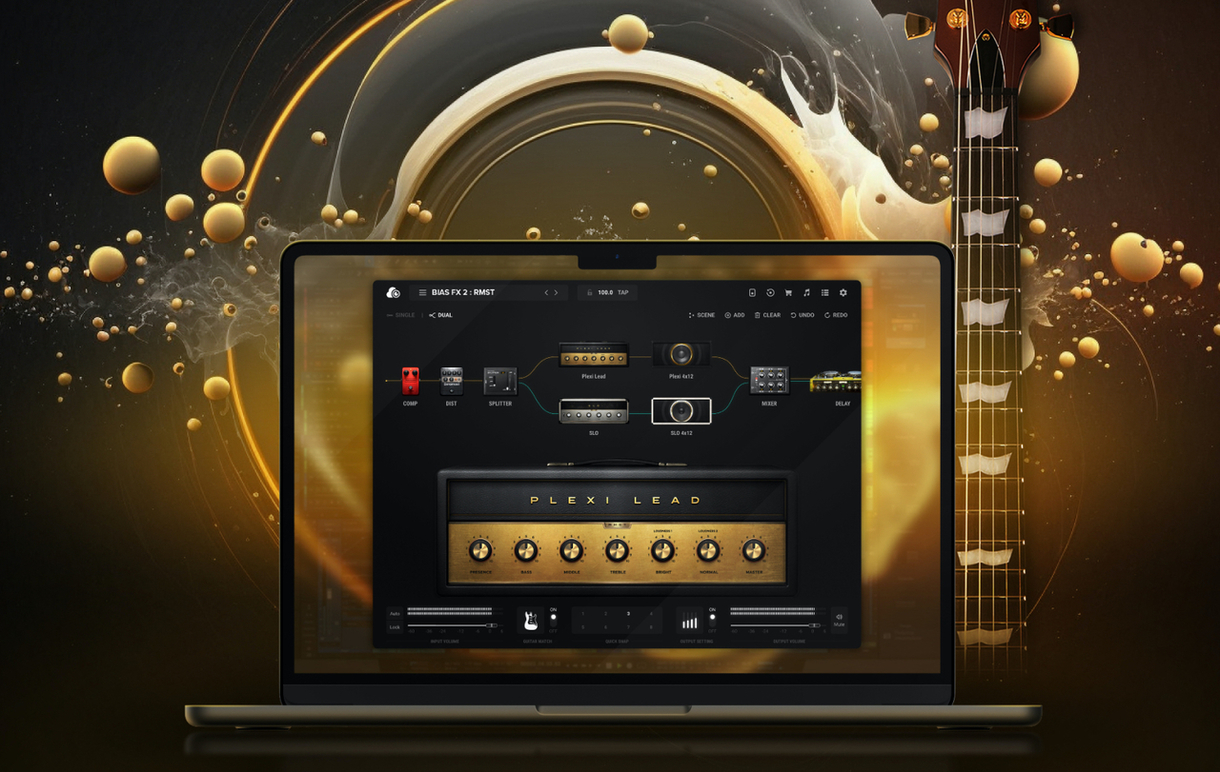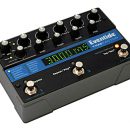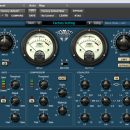 Let’s time warp back to 1982. Digital sound was in its infancy and a great wealth of cutting-edge, interesting and unique devices were sprouting up in the pro audio and music scene. The digital age was here to stay, and those first generation, oddball devices fell into obscurity and have mostly been regarded as good first attempts, but today we have far better digital devices to work with.
Let’s time warp back to 1982. Digital sound was in its infancy and a great wealth of cutting-edge, interesting and unique devices were sprouting up in the pro audio and music scene. The digital age was here to stay, and those first generation, oddball devices fell into obscurity and have mostly been regarded as good first attempts, but today we have far better digital devices to work with.
Not if you’re The Edge of U2 fame. He owns a stockpile of both working and non-working, original Korg SDD-3000 rack delay units, and has been using them since their inception. Sometime around the end of 2008, The Edge’s guitar tech, Dallas Schoo, had a repairman reach out to Korg to fix a non-working SDD-3000. Korg, unable to obtain thirty years old, technologically inferior and outdated parts, was unable to help with the broken unit.
| Category | Value | Rating |
| Features | 20% | |
| Usability | 25% | |
| Sound | 25% | |
| Documentation & Support | 10% | |
| Price | 20% | |
| OVERALL RATING = 3.6 Stars, which earns it a WIHO Award! 3.6 stars or better: Outstanding, WIHO Award 3 stars or better: Worth considering 2 stars or better: Suited to specific needs 1 star or less: Not recommended |
||
What they did instead was pure genius: re-create the SDD-3000 as a modern, digital delay unit in pedal form, designed from day one to appeal to guitarists (but well suited to a variety of other applications), with a faithful reproduction of the original form and function (and sound). Then, they threw in a few modern enhancements to make it even “better” than the original, when you want it to be. To say they succeeded would be an understatement.
Features
The Korg SDD-3000 Pedal is quite the feature-packed unit. This is not your ordinary delay pedal, and it covers far more multi-effects ground including flanger, chorus, detune, modeled degradation of the original circuit, and a wealth of other effects.
The SDD-3000 is not a small/compact pedal by any measure. In fact, the actual measurement of its footprint includes 10.24” in length. Four standard, Carling-style footswitches line the bottom of the pedal, labeled Bank Down/Tap, Bank Up, A and B. Above each switch is a lamp to show if the bank/preset is in operation or bypassed.
 Starting at the top left-hand corner, we have the Input Attenuator switch (+4/-10/-30 values) as well as the input level knob. Directly related and to the right is the Headroom Indicator lamp. This lets you know if you’re smashing all 13 (simulated) bits appropriately.
Starting at the top left-hand corner, we have the Input Attenuator switch (+4/-10/-30 values) as well as the input level knob. Directly related and to the right is the Headroom Indicator lamp. This lets you know if you’re smashing all 13 (simulated) bits appropriately.
The next eagerly anticipated section contains the Delay Time knob, display and associated buttons. A four-digit LCD display shows the delay values as adjusted by the Delay Time Knob, and up to 4000ms of delay is available. The R Time button allows you to adjust the right channel delay independently of the left (a quirky feature; remember the infancy of the original. This was cutting edge stuff back then), and a Sync lamp shows a lock with a predetermined, user-definable note value, along with the Tap Tempo button. This is achieved by simultaneously pressing the R Time and Fine buttons. Lastly, this Fine button allows you to more accurately dial in delay times.
The next section to the right of the Time/Value LCD is the Delay Type module. LED diodes show whether SDD-3000, Analog, Tape, Modern, Kosmic, Reverse, Pitch or Panning delay types are selected (only one at a time is possible). A Select button allows you to toggle through the delay menu. Finally, an L/C/R button allows you to add a center channel to create a multi-tap delay in each mode. Funky? You bet!
Under the Delay Time LCD, you’ll find the Regeneration Feedback knob, Inv, and Filter buttons. Turning the Feedback knob to the right, you can select from no repeats to infinite repeats (which will result in a feedback loop). The Inv button inverts the phase of the input signal, which can create interesting flanger type effects, depending how the rest of the pedal is set. Low filter parameters are 125, 250 and 500 Hz, and high filters are selectable at 2, 4 and 8 kHz. The amount of signal passing through these filters is dependent directly on the number of regenerations dialed in.
Continuing to move to the right on the pedal, we find the modulation section. Five separate waveform shapes are available, as well as an intensity and frequency knob. The last knob on the unit is the balance knob, providing global mix control. Rounding out the face of the pedal are two MIDI function buttons as well as a master output attenuator, allowing fine tuning of the output level. The Korg uses a 9v barrel-type connector, clearly aimed at pedalboards, and includes a power supply as well. Considering the feature set here improves and expands upon the classic rack unit, we'd be remiss if we didn't suggest that this pedal is "Even better than the real thing."
The SDD-3000 has limited MIDI functionality. It sends and receives program change (PC) messages, but it doesn’t sync to external clocks (nor transmit its tempo info), so tempo is strictly determined by your saved values within each preset and whatever you tap directly on the pedal’s Tap button.
Usability
We set our Korg SDD 3000 up the day we received it. The back of the pedal with the ¼” ins and outs were simple enough to route to our effects loop. More control generally equates to more room for pilot error! We took some time to dial in the input and output stages and once our signals were no longer on fire, we were up and rocking. The single most important thing we found throughout playing with this unit was we had to get the input and output attenuators right from amp to amp. This wasn’t difficult to do, but it’s something we needed to be conscious of.
Korg built an incredibly feature-packed unit into a stomp style pedal. This is the SDD-3000 rack unit stuffed into a pedal for all practical intents and purposes. As such, there is a slight to moderate learning curve, depending on user experience. Yes, you can plug-and-play and manage to achieve some useful sounds just by scrolling through the presets. However, to really take full advantage of what this awesome piece of gear has to offer, we needed to delve a little further.
Another important feature not instantly accessible is the ducking feature. We needed to hold down the MIDI/SYS buttons and turn the Modulation intensity knob to access the amount of ducking the effects have in our signal (standard presets have none by default). We were thrilled the pedal included this very important function, as it provides a level of detail you get from studio delays that most guitar pedals lack. We must stress this: read the manual!
The Bank Up/Down switches were pretty straightforward and easy to use. We were able to scroll through the available factory presets by simply stepping on a bank button and selecting program A or B. If we liked what we heard, all we really had to do as pepper to taste with the balance knob to achieve the desired mix.
Saving our own custom sounds was as simple as dialing in the type of delay, filter options, modulation options and hitting the Write button twice (for write-in place. You can of course select a new memory location in between those two button hits). Once we learned our way around the pedal, its functions became second nature.
An expression pedal can be connected to the unit to allow for on-the-fly time or modulation changes. A simple procedure for calibrating your favorite pedal was detailed in the manual.
In system settings, a Kill Dry function can be set if you need this for your wet/dry/wet setups or parallel effects loops. True Bypass is also available as an optional setting change. Spillover in both program changes as well as bypassing the effects is also user definable, though we prefer to leave these On for best results. The only capabilities we found ourselves missing were the ability to bypass delays via MIDI CC messages (useful if you wanted to preserve the tonal change that this pedal’s preamp imparts on your tone), and the ability to sync tempo with other devices.
Sound
We've finally found what we're looking for! We absolutely loved the delay sounds from the Korg SDD-3000, but we’re not going to tell you about them... yet. One important feature the original Korg SDD-3000 rack unit had was its preamp. Purposely matching or mismatching the input and output with his Vox and Fender amps played a huge role in shaping the Edge’s classic tone, and we love that this capability was preserved in the SDD-3000 pedal. It definitely adds some extra harmonic complexity to the sound, particularly in the low mids, and gives this pedal some character where most of the other premium delay pedals are all pretty much equals of one another.
Is anyone going to notice this subtlety once your drummer kicks in? Probably not, but it will certainly lend an edge to your recordings. Pushing the input on the attenuator setting made the preamp’s inherent sound more apparent. It did something “good” to our raw sound. We chose our Fender Custom shop ‘56 reissue Stratocaster for its snappy single coils (and to help us chase The Edge’s tone a bit). It gave us a good reference point for exactly what the preamp did without any humbuckers overly compressing the sound. This is easily the pedal’s “secret sauce.”
We plugged the SDD-3000 into a Mesa Boogie Mark Five’s effects loop and toggled through the delay modes. We dialed in roughly five repeats and a 50% wet/dry balance in order to really hear what each delay did. The SDD-3000 mode gave a series of filter cuts in the highs, which became more apparent with every repeat. Also, while carefully listening, we could detect signal degradation and distortion with greater intensity as the notes repeated (that’s by design). Dialing in a little modulation in this mode made this particular delay really stand out!
The Analog delay mode gave a series of repeats with the same kind of filter cut, without hearing any signal degradation. We did not hear any varying filter cuts in this mode.
The Tape delay mode is where things got even more interesting. We heard the same kind of filter cuts, only this time with some warble and flutter! We felt this was an extremely accurate representation of true tape delay, and, man, was this inspiring. Great gear inspires us to play, and we wanted to play through this mode a lot!
Modern was indeed the most transparent delay of all the delay modes, and more akin to what you hear in those other premium delay pedals. It was easily colored by the modulation section, and this was our favorite mode in which to manipulate the regeneration and time knobs into oscillation. This trippy stuff can get really loud, really fast, so make sure the neighbors are at work.
Kosmic was interesting in a way of sound design. The best we can tell, it was a mix of delay, a touch of reverb and some light pitch shifting. It was fairly named, and recording a few clean parts was a lot of fun in this mode.
Reverse worked for us as advertised: it turned the beat around! Putting the balance knob at 100% yielded unexpected but always fun results. Jimi Hendrix would approve. We experienced no bleed of the original signal at 100%. Yes, that’s why you read our reviews… we check for these details!
Least exciting, the Pitch mode always seemed to tuck the delayed, pitch shifted note underneath the signal, regardless of levels. We were resigned to believe that’s just how this mode is voiced. We would stop short of using this unit as a pitch shifter, and we view the Pitch mode as a kind of bonus more than anything else. We were unable to reproduce the classic, micro pitched ‘80s solo sound, as even at 1ms there is an apparent delay. We are not entirely convinced of the 1ms value. Still, there are very creative uses for this mode for trippy sound effect, and we liked it in that capacity.
Connecting the Korg SDD-3000 to various amps gave us the similar happy results. The real key was getting the input attenuation correct. We knew our amps spit out varying levels of signal, some of which are not adjustable (such as the Marshall JCM900 MKIII). We felt it is very important to have control right on the pedal (and the settings are made on recessed switches that are easy to adjust but won’t accidentally get knocked out of place). This was forward thinking on Korg’s part, even if they came up with the idea three decades ago.
Documentation and Product Support
All we needed to know was in the box. A comprehensive manual detailing the complete function and operation of this pedal was included.
Warranty service is good for 1 year parts and labor, with the exception of the power supply and footswitches. Those are just covered for ninety days, but registering online extends things an extra year!
Online support includes videos, the product manual and within the warranty period, support via email. If you look up some of The Edge’s classic delay settings online, you’ll have no trouble copping his delays.
Price
The Korg SDD-3000 (MSRP $500.00) sells for approximately $399.00. This price alone is competitive for any premium, straight-up, multi-mode, digital delay pedal. But given this pedal’s expansive feature set, as well as the harmonic enrichment of the preamp’s sound, it’s an even stronger value. Korg knocked this one out of the park.
Contact Information
KORG
www.korg.com/us
| Evaluation Short-List |
|

